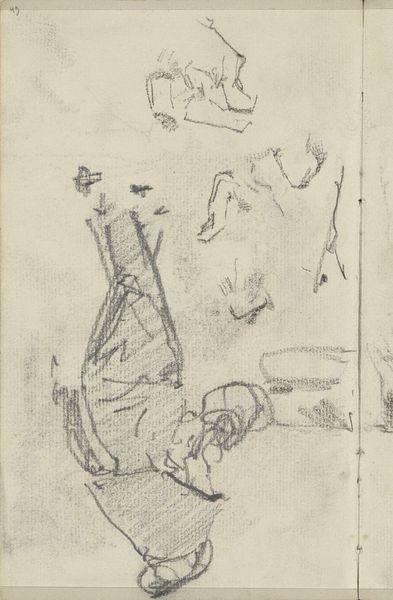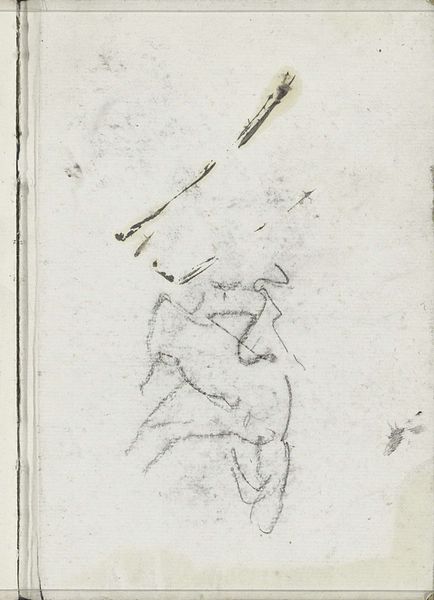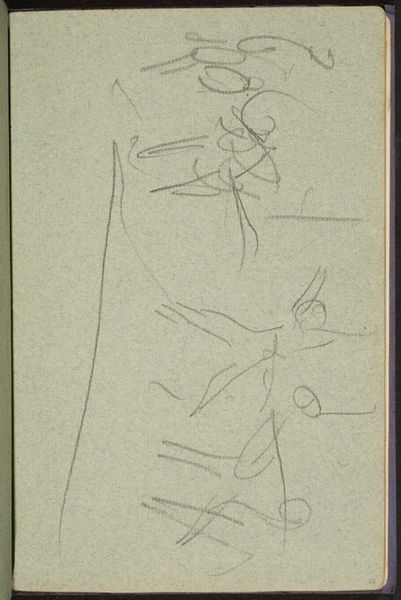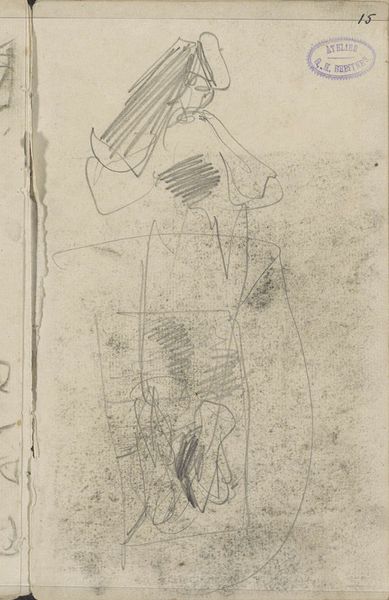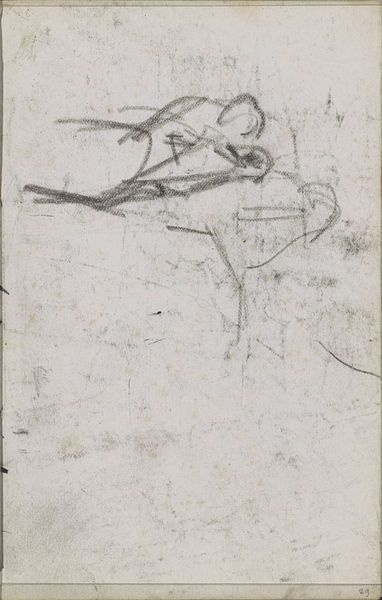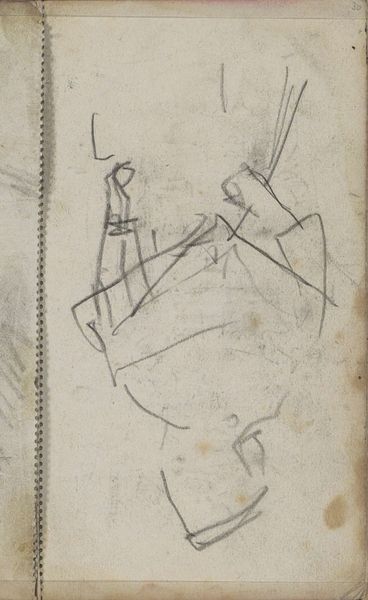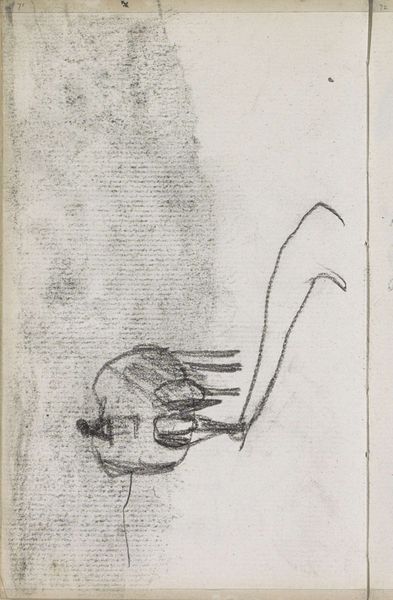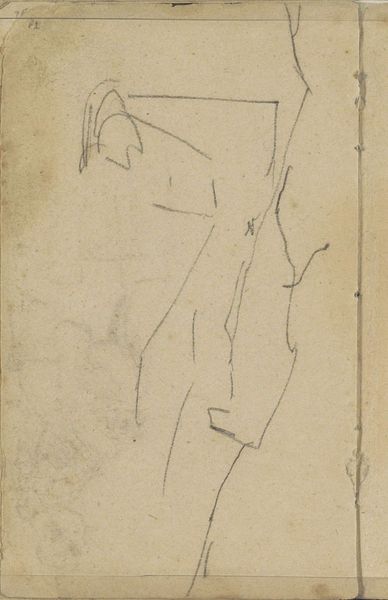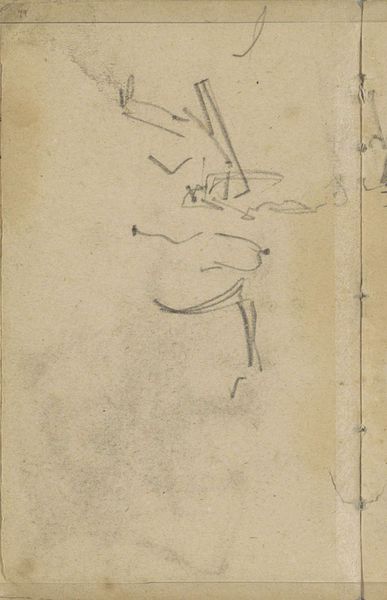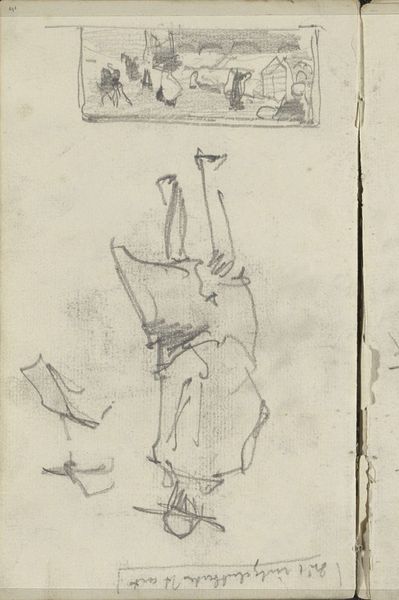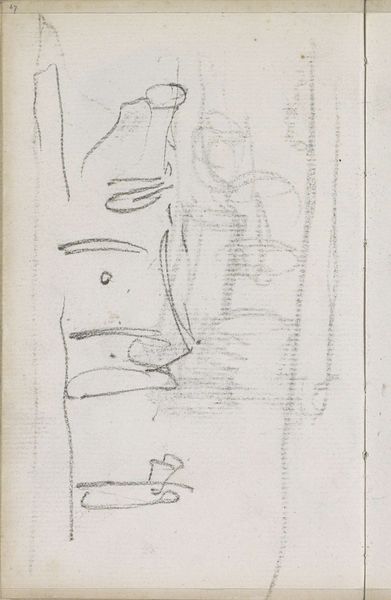
Staande jonge vrouw bij een paal, mogelijk een lantaarnpaal 1896
0:00
0:00
georgehendrikbreitner
Rijksmuseum
Dimensions: height 157 mm, width 92 mm
Copyright: Rijks Museum: Open Domain
Curator: Breitner's "Standing Young Woman by a Post, Possibly a Lamppost," created around 1896, is an intriguing glimpse into his process, captured in pencil. What's your initial reaction? Editor: There's an immediate sense of vulnerability to it. The quick, sketchy lines make her feel so present yet ephemeral, almost disappearing into the negative space. It gives a certain melancholic and intimate feel, as if we’ve intruded upon a private moment. Curator: Indeed. Looking at the physical making of the piece, you see Breitner's focus on immediacy. The pencil strokes reveal his working method, the rapid application suggesting the fast pace of urban life. There's little attempt at refinement. It feels like an exercise in observation, emphasizing the ephemeral moment. Consider also how the paper itself supports this. It's a material record of a transient experience, cheap paper allowing for quick capture without the pressure of precious resources. Editor: Absolutely. We have to contextualize this within the social fabric of the time. Breitner was drawn to representing the working class, particularly women. I see her pose, the way she leans slightly, seemingly burdened, beside that austere post. Is she waiting for someone? What prospects did working-class women have? What type of labor was available to her? It speaks volumes about their constrained social roles. And I think we have to see that relationship as the actual topic. Curator: You highlight a crucial point. While on the surface it is simply a sketch, there’s a lot packed in there, the speed with which the figure emerges is also central to its impact as process. Also think about the consumption of images – there are few clues as to this model’s status and her dress is almost completely dissolved by those urgent pencil lines. It prompts reflection on the industrial context which had produced cheaper modes of transport and light by the late 1890s. The gas-lit streets made such observations and encounters newly possible for artists and viewers alike. Editor: And perhaps for this young woman. One wonders if Breitner caught her eye as much as she caught his. The incompleteness begs for the story behind their intersection to be illuminated and given justice. It allows us to consider those often excluded from the mainstream accounts of history. What’s especially striking is the lack of traditional beauty. Breitner captures the realities of daily life, and by doing so, critiques established artistic conventions and raises pressing questions about representation itself. Curator: A potent thought. The roughness and the immediacy aren't weaknesses, but powerful choices that invite the viewer to question their gaze. Editor: It pushes us to consider how artistic practices can amplify marginalized voices and confront social inequities, and it feels remarkably pertinent for today. Curator: Indeed, art’s ability to facilitate social consciousness remains profoundly powerful.
Comments
No comments
Be the first to comment and join the conversation on the ultimate creative platform.
